There was something quite charming about Cork. I arrived at a budget hostel in the early afternoon and had the rest of the day to wander through town. The sun was out, which helped. I picked up a brochure for a self-guided walking tour and strolled through town, along the river, past the university campus and then up to the Shandon area. Everyone was out, drinking outside and enjoying the sunset. Lovely stuff.

There were lots of European long-stay guests at the hostel. Apparently there’s a serious lack of accommodation in the town. I had my first pint of Guinness and watched the Champions League. I hope I don’t offend any Irish readers when I say that it tastes no different to the pints poured in London. Equally delicious though, I might add.


I continued to hug the coast, and was now on the official Wild Atlantic Way. The WAW is a 2,600km long route around Ireland’s West coast, making it one of the longest defined coastal routes in the world. I’m familiar with it because of the bikepacking race The TransAtlantic Way, which takes place along a similar route every year. I’ve always thought the route looked stunning, but it was clear that the weather can be horrendous (even in the middle of summer) when it wants to be.
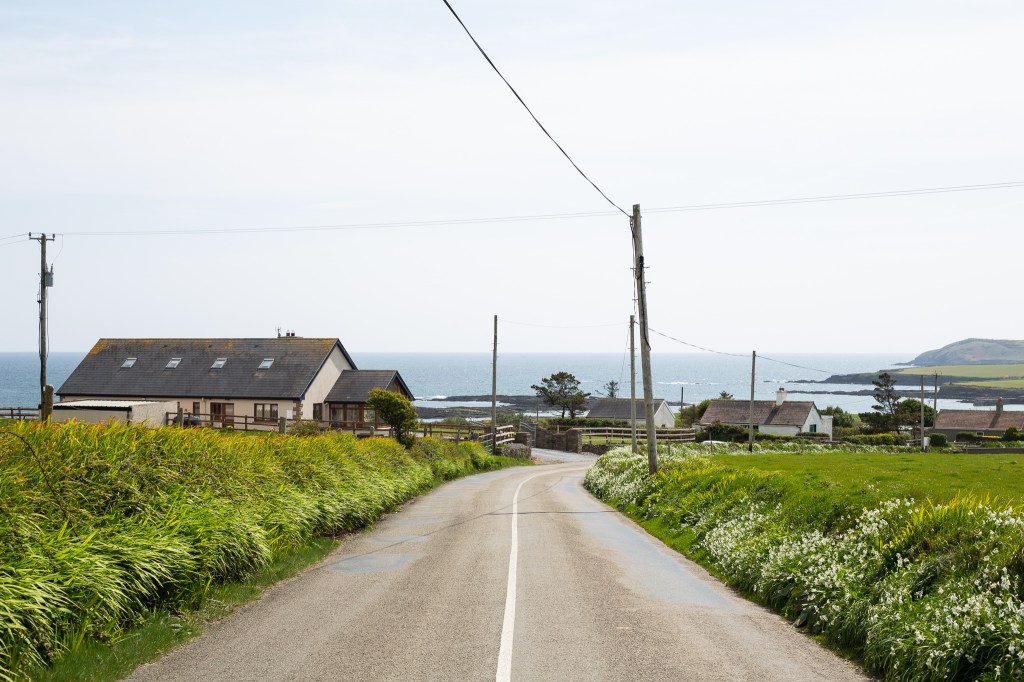
I was incredibly lucky during my ride in Ireland. It wasn’t exactly hot, but the wind continued to blow from behind and there was barely any rain. This was the first time I’ve done a tour with full-length mudguards in a very long time – so they must be a lucky edition.

I remember meeting people in Europe and America who found it odd I’d travelled so much and yet never been to Ireland. The truth is, like many of my peers (I suspect), I have just been drawn to places further afield. Although Ireland is not the UK – that doesn’t change the fact that we are far more culturally aligned than basically any other countries on this continent.


As I cycled west, I began listening to the West Cork podcast. It’s a non-fiction series on the mysterious murder of of Sophie Toscan du Plantier in 1996. Sophie was a French woman who owned a home in the area. She was killed in a brutal manner, and they never found the murderer – although there’s a prime suspect who features heavily throughout the series. It’s got all the features of an addictive investigation (and I’d recommend listening to it, regardless of whether or not you have any interest in this part of Ireland).
I’m not very good at remembering the names of places, so most of the setting was lost on me and the story felt quite abstract. That was until I neared Schull, a village that features throughout the podcast story. The events unfolded right around here, and Sophie’s house (where she was killed) was just a short detour from where I was cycling.

I wasn’t interested enough to take a dark-tourism detour, instead continuing all the way out to Mizen Head peninsula before searching for somewhere to camp. I backtracked to Crookhaven, had a pint of Murphy’s (which I’ve decided may be more delicious than Guiness), and then headed up to some old ruins to camp. Wild camping wasn’t always straightforward in a country that is entirely chopped up green fields, but some spots – like this one – were perfect.

My only suggestion would be not to listen to a murder mystery about someone getting randomly killed in the middle of nowhere, as you try to go to sleep in your wild camping spot in the middle of nowhere (but within the exact area of the actual murder).

The following morning I listened to the final episode. It concludes with an exchange in a local pub that happened to be the last place that Sophie was seen alive. I recognised the name of it… Googled it… and then realised that was the exact spot I’d nursed my pint of Murphy’s the previous evening! Weird.

The landscapes were wilder out on these peninsulas, reminiscent of the Scottish Highlands with moorland above farmed areas. I especially enjoyed some of the ‘short cut’ roads that crossed over the mountainous centres of the peninsulas.

Healy Pass across Beara Peninsula was a particularly good one. A moody, winding mountain road that snaked up through craggy hills up and over to the peninsula’s northern coast. The Irish landscape had been cute, but now – for the first time – it was worthy of the adjective ‘epic’.


I deviated from the coastal Wild Atlantic Way so that I could visit Killarney in County Kerry. As I crossed Moll’s Gap, I couldn’t help but notice that the road was particularly busy. And not just with the regular traffic, but pimped out boy-racers. There were fresh donut skid marks on the road and groups drinking booze at the scenic lookouts. Some of the laybys were fenced off, with caravans set up behind them. I couldn’t quite figure out what was going on.

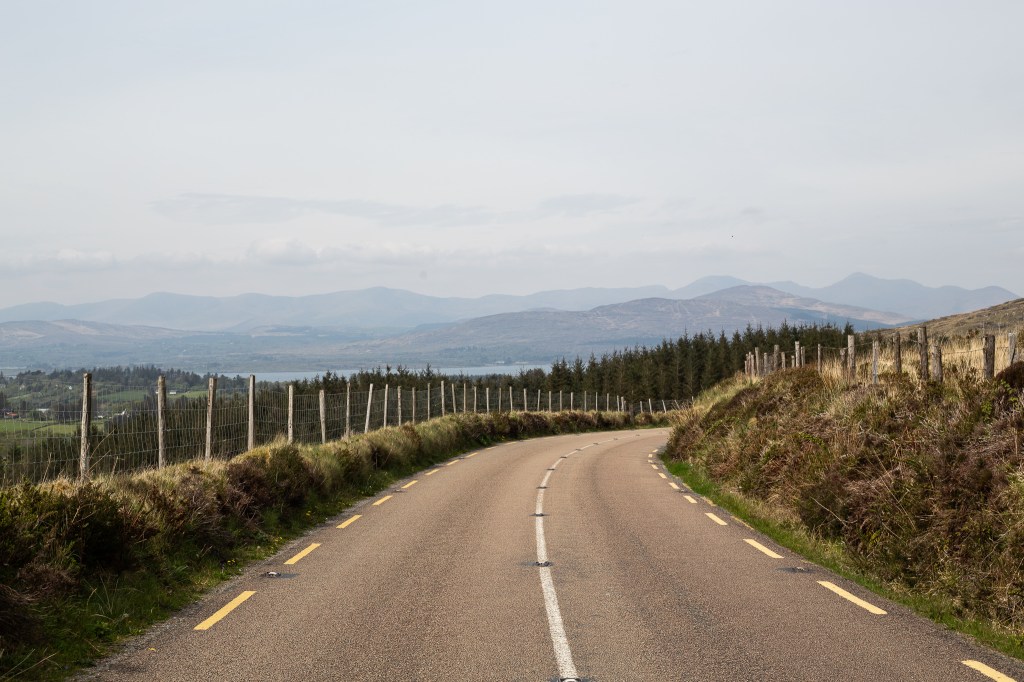
I stayed at an official campsite near town. Killarney was full of modified cars, revving up and down the main drag. I quickly learnt that the ‘Rally of the Lakes’ was taking place over the Bank Holiday weekend, and that while it was a proper sporting event, it also attracted a lot of eager fans who simply came along to race each other and show-off their drives. From a quick Google, it seems they’ve had plenty of problems with the boy-racers in previous years.

I cycled into town in the evening, in search of a bar that might have some live ‘trad’ music. It didn’t take me long to find one – 3 old Irish blokes jamming along to an almost-empty bar.
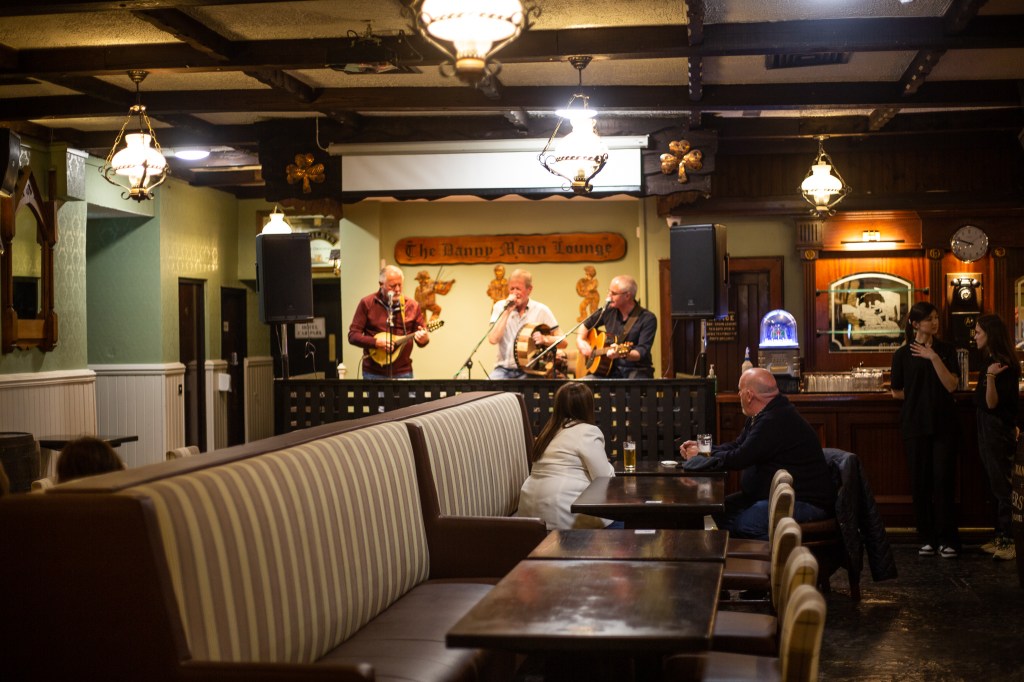
On the way back the boy racers were out in full force. I heard someone shout ‘do a wheelie’ at least twice, and from one car I heard ‘real men ride women’. At least that was a new one!
I drifted off to the ‘soothing’ sounds of cars revving around the campsite into the early hours…

It’s a good thing I’d crossed Moll’s Gap when I did, because the road was closed the next day for the rally. Instead of cycling out of town, I pedalled a short distance to Ross Castle and took a ferry over to Lord Brandon’s Castle. I’d read that it was a thing tourists do, and that the boats would also take bikes as many visitors would then cycle back to town via the Gap of Dunloe.

The boat ride was definitely worth the €25 ticket. I boarded with a couple of young French hikers and a tour-group of Americans. Our boatman was a wise-cracking local chap, who had endless Irish jokes up his sleeve to keep the Americans giggling until they disembarked halfway. Myself and the French couple continued up the river, which was where the journey became really stunning. At one point we had to get out and heave with all our might to get the boat upstream under a narrow bridge where the current was too strong.

Our guide seemed tired, but that’s probably because he’d been up incredibly late/early (or both!) watching the Katie Taylor vs Amanda Serrano fight. It was the first time a women’s boxing match had headlined (and sold out) Madison Square Garden in NYC, and Ireland’s Taylor had won.

Despite his fatigue and all the hauling, we arrived at shore in one piece at Lord Brandon’s Cottage and I began cycling up the gap. Sadly, the boy racers were joining me – and what would have been a peaceful, scenic road was actually quite unpleasant. Clearly these lads were not interested in spectating the rally.
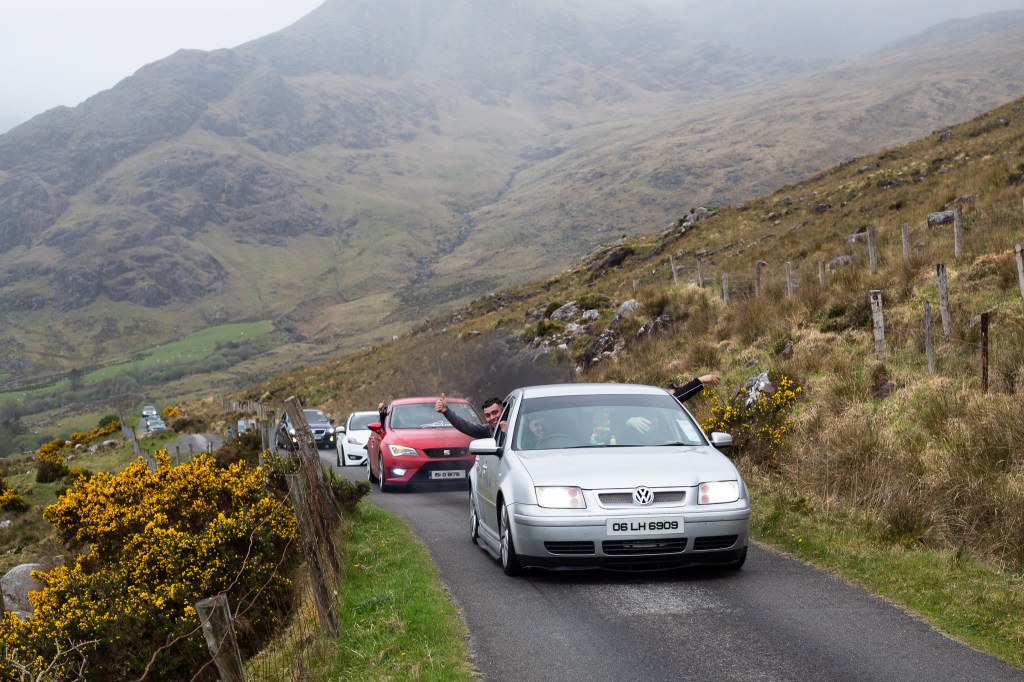

National Parks and Bank Holiday weekends are never a good combo, let alone with a big rally taking place in the area. The narrow singletrack road was a complete traffic jam, and the drivers got themselves completely stuck at times. I got up faster than they did.
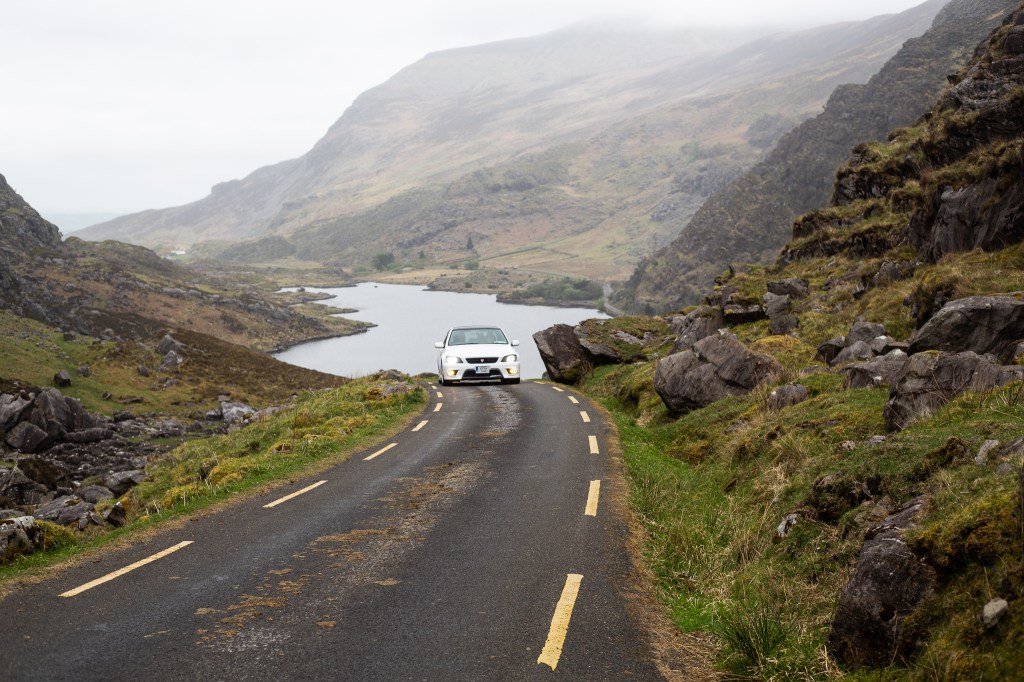

I rode out onto Dingle Peninsula, along a road that was still far too busy for my liking – even without all the boy racers. But it was worth it for the ride over Connor Pass, which at 456m is one of Ireland’s highest roads. It was definitely the toughest climb I encountered.



Eventually I left the Wild Atlantic Way route and began heading inland towards Tipperary. There was no mistaking that I was in a new county, as county flags were blowing outside almost all the homes. There were still almost as many Ukrainian flags, which was nice to see.

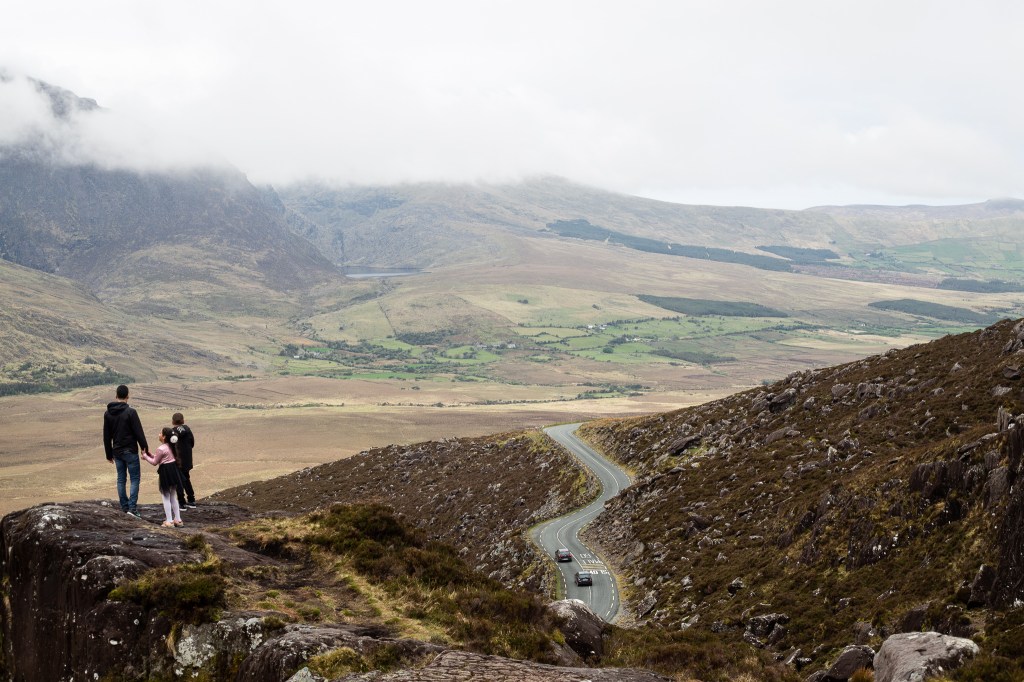
It was a different side of Ireland, more like the landscape I’d cycled over the first couple of days. The WAW hadn’t been particularly busy, but I’d found it surprisingly touristy. It had been very wealthy in places too - both the calibre of fancy coastal houses (many of which were probably second homes) and also the level of flashy tourism. In many of the villages there were big exclusive hotels, something I don’t think you see the same as in Devon & Cornwall (which I found quite similar in places).


The immaculate lawns and ginormous houses were back too, an aesthetic that is very unlike what you’d see in Britain (despite the similar hedgerow-lined landscape). You can almost always see a house in Ireland, and yet it’s so sparsely populated. It’s as if people are trying to avoid their neighbours. I can’t say I found the architecture particularly charming, the huge houses often seemed quite ‘American’ to me – with automated lawn mowers chopping away around neat asphalt driveways. God knows why they need such large houses.

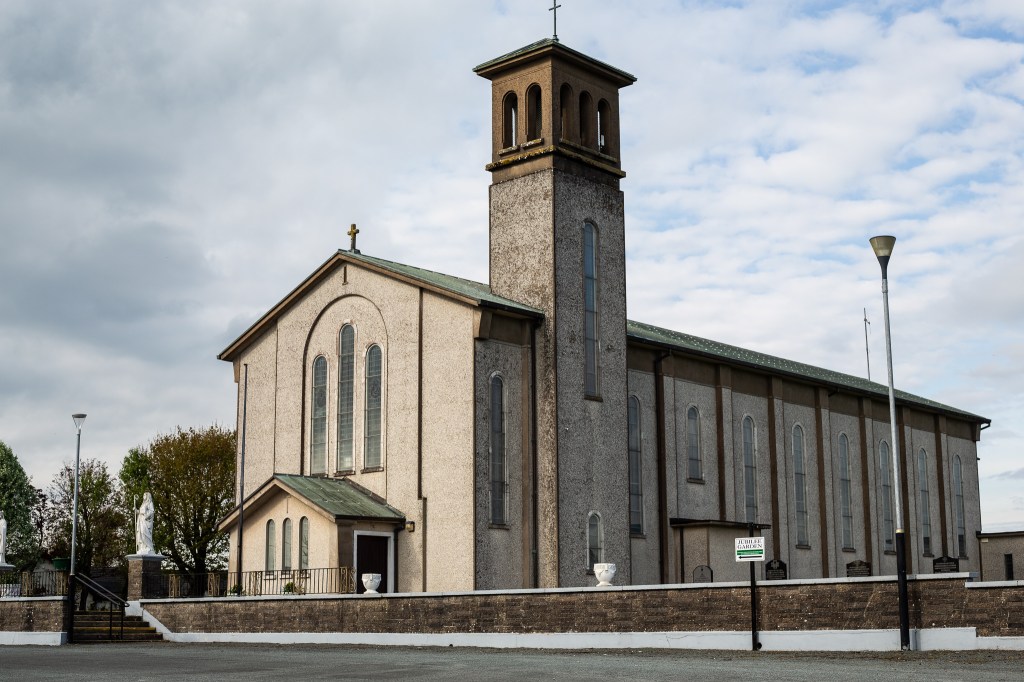
I have some Irish blood in me (although don’t we all). I’m something insignificant like a 16th Irish, but it seems that 16th was significant. A few years ago I discovered that my family once owned a castle in Ireland. Quite something, right? My dad and brother went on holiday to Ireland a couple of years ago and decided to pop by and pay the site a visit. They showed me the photos, and the location on Google Maps. There’s even articles about it online. It’s called Thomastown Castle, but these days it’s nothing more than ruins.

So, a large deciding factor of this Irish bike tour was to go and check up on ‘my castle’. That was an influencing reason on the route I’d decided to pedal – combining two different ferry ports, a chunk of the WAW and this random old building.

I’d considered trying to sneak in and camp in the castle, but a) it was a tad too far for me to reach that day and b) it was clearly within private land – so that may have been a little too cheeky. Instead, I decided to call it a day at Tipperary, where I picked up some supplies and detoured a little south to find a campsite in Bansha Forest.
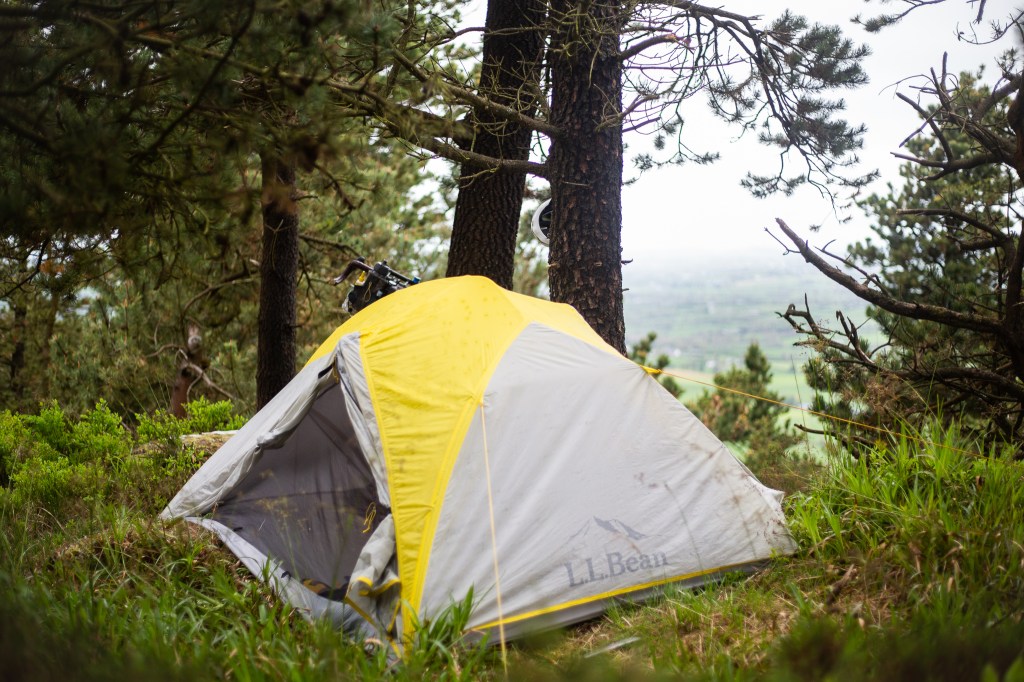
I did a little more research in my tent about the castle that night, and discovered this video on YouTube that gives a good aerial view, and – far more intriguing – that a book had been published a couple of years ago called ‘The Curse of the Thomastown Castle’. I learnt a little from the summary, but I’ve since gotten hold of a copy to read. In short, the book is about an American woman who meets another distant relative of Mathew family (they’re the rich lot that owned the castle through the 17-19th century). He tells her about a curse cast upon the family that still lingers today. Back in the early 19th century, one of the children tragically drowned while neglected by the mother. The nanny is accused of witchcraft, and of casting a sleeping spell over the mother. She was charged with witchcraft (despite that not being illegal any more by that time in Ireland) and burnt. Supposedly, on the ‘way out’ she cursed the Mathew Family to ‘never realise their wealth’.

For some reason the American author gets weirdly obsessed by this story and goes on a remarkable tangent trying to lift it. It’s not the best book I’ve ever read, but I’m glad it was written! Now if I never get rich, at least I have an excuse. That wretched nanny.

In the morning I rode the short distance to the castle. There was no mistaking it from the main road, but it was clearly on fenced-off private land. An elderly couple were leaving their home across the road from it, so I went over and checked access with them. They told me I could leave the bike in their garden, jump the wall and walk over – no one would care.

It required a bit of a walk across a couple of fields, and ducking under some electrical fences, but there were no cows to deal with. Getting a bike in there would have been a nightmare, so I was glad to have left it. The ruins themselves were quite impressive. Had this been in Surrey I’m sure it would be a protected site with controlled access, but there are plenty of old castles like this around here. In some areas the external brickwork was still in good condition, but nature was slowly taking over the rest of the crumbling interior.

I took a quick photo of the statue of Father Mathew as I left Thomastown village. Not long after the nanny was burned, the Mathew estate became neglected and Father Mathew made quite a name for himself in a crusade against addiction. He became a bit of a big deal.

That afternoon I popped into a tiny pub to get some water, and it felt like stepping back in time. Chairs lined the room of a small, dark and dingy room, with punters sat around the edges. The average age – barman included – was around 70. As the barman kindly refilled my bottles, one of the locals sat at the bar leant over to me. “Are you French?” he asked, clearly very confused by my accident. I could smell the drink on his breath. “English”, I replied. He looked me up and down, before saying “you can fuck off then” with a snarl, holding eye contact for an awkward second, before patting my shoulder, leaning back with a grin. “Just messing!” he cackled. It felt like the kind of joke someone makes when they’re not actually completely joking.
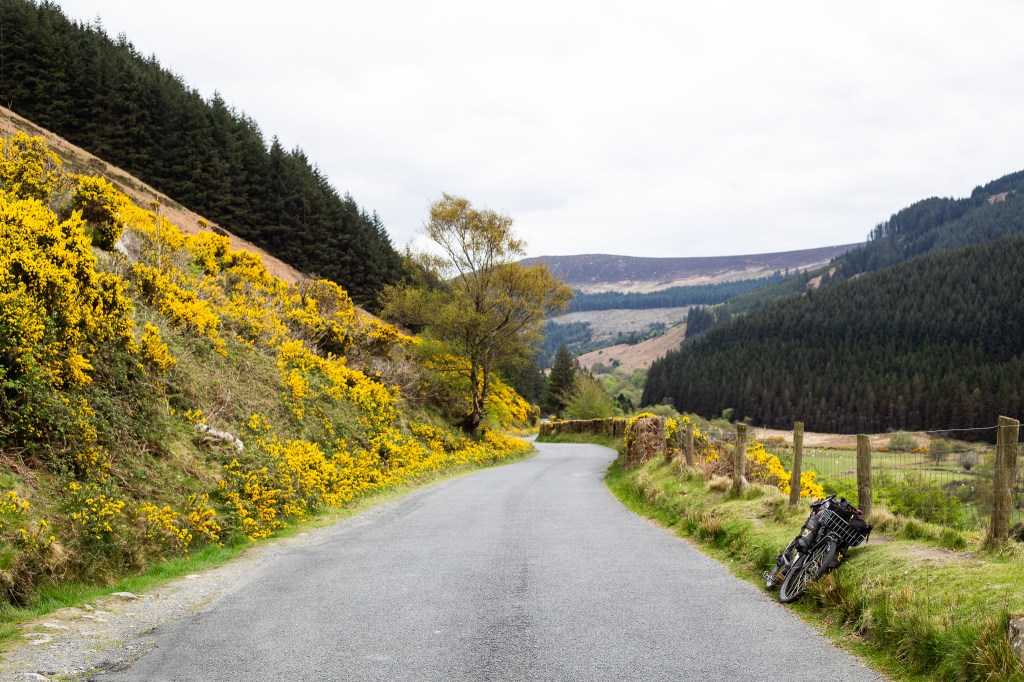
After a relatively boring day of nondescript cycling through green farmland I eventually reached some more hills. I opted for a slightly longer route through the Wicklow Mountains, so that I could take the scenic road to the capital.
I’m glad I did, because the Wicklow Mountains were stunning – far more interesting than the endless patchwork of fields. It reminded me of the North York Moors, and I’d had no idea such wilderness was so close to Dublin. The hills made for a moody day’s riding under low-hanging clouds before I descended down to Ireland’s East Coast.

That evening I stayed with a friend’s dad just south of Dublin, meaning that it was just a short ride into town the following morning. I’d planned on staying in a hostel while in the capital, but it was Friday night and the cheapest bed I could find was £75! I half-heartedly tried to find a host without luck, before deciding to take the afternoon ferry back to Wales. I’d like to see Dublin properly, but I had to be back in London quite soon and it’s the type of city I’d like to visit on a bike-less long-weekend with other humans for company.

That’s it for this time! It was time to start heading back towards England, but there would be plenty more tough riding across Wales to deal with on the way…